Eat these vegan foods that are high in iron to avoid an iron deficiency on a plant-based diet.
Estimated reading time: 13 minutes
Table of contents
- Why is Iron important?
- What’s the difference between heme and non-heme iron?
- Can vegans and vegetarians get enough iron from food?
- 12 Plant-Based Sources of Iron
- 1. Chickpeas: 1/2 cup, 1.5 milligrams iron (mg) (8.3% daily value (DV))
- 2. Spinach: 2 cups raw packed, 1.4 mg iron (7.7% DV)
- 3. Oats: 1 cup, 1.7 mg iron (9.4% DV)
- 4. Tofu: ½ cup, 3 mg iron (17% DV)
- 5. Lentils: 1/2 cup cooked, 3.17 mg iron (18% DV)
- 6. Potatoes: 1 medium potato, 1.87 mg iron (14% DV)
- 7. Cashews: 1 ounce, 1.72 mg iron (13% DV)
- 8. Edamame: 1 cup, 2 mg iron (11% DV)
- 9. Sesame Seeds: 2 tablespoons, 1.2 mg iron (7% DV)
- 10. Flax Seeds: 2 tablespoons, 1.2 mg iron (7% DV)
- 11. Beets: 1 cup, 1.34 mg iron (7% DV)
- 12. White Mushrooms: 1 cup cooked, 2.7 mg iron (15% DV)
You’ve likely heard about the mineral iron, especially if you’re eating a plant-based diet. I’m sure you’ve even had people say things to you like, “You can’t get enough iron without eating meat.”
I’m here to tell you that isn’t true. There are things you need to know about iron to avoid a deficiency, especially on a plant-based diet. So let’s take a deep dive into this important mineral.
Why is Iron important?
Iron is a mineral that is responsible for the proper function of hemoglobin, a protein that helps transport oxygen in the blood. It’s necessary for growth and maintaining energy levels.
Its ability to deliver oxygen to working muscles makes it especially important for athletes. During exercise, the body sends blood to the working muscles to keep energy levels high and power you through a workout. If you’re deficient in iron, the body won’t be able to transport blood as quickly, and you may fatigue quickly.
The recommended daily intake for iron is 18 milligrams (mg). This is a bit more difficult to achieve on a plant-based diet because iron from plants is not absorbed as well as iron from animals.
What’s the difference between heme and non-heme iron?
There are two types of iron:
- Heme iron: This is the iron found in meat, such as chicken, beef, pork and seafood. It comes from the blood of those animals, and heme iron is more easily absorbed by the body.
- Non-heme iron: This iron is found in plant sources and animal byproducts, such grains, fortified cereals, beans, nuts, seeds, vegetables and dairy. Non-heme iron is not as well absorbed by the body, and you need more of it to meet your iron needs.
Can vegans and vegetarians get enough iron from food?
It is absolutely possible for vegans and vegetarians to get enough iron through food alone. There are plenty of iron rich foods for plant-based eaters. Many veggies have iron, but you may need to eat more of them to get enough.
The National Institute for Healthy (NIH) recommends that vegetarians eat 1.8 times more iron than meat-eaters, which is about 32 grams. It never hurts to add more iron-rich foods to your plant-based diet.
You can also increase your absorption of plant-based iron by paying attention to the foods you eat together. Vitamin C actually enhances the absorption of iron, so eating those two nutrients together can help you body absorb this important nutrient. For example, pair iron-rich oats with Vitamin C rich strawberries.
Conversely, calcium decreases the absorption of iron. Therefore, you want to be mindful of eating foods that are high in calcium with iron-rich foods.
If you’re a vegan or vegetarian and you’re worried about other nutrients you may be missing out on, make sure you check out these articles:
- Vegan & Vegetarian Sources of B12
- 12 Best Plant-Based Sources of Calcium
- 8 Best Vegan Proteins For Athletes
Weird signs of an iron deficiency
If you aren’t sure if you’re getting enough iron, watch out for these signs and symptoms.
- Chewing on ice. Medical experts aren’t sure why this happens, but people with iron deficiency experience something called PICA– the desire to eat things with non-nutritive properties, such as ice, clay, dirt or paper. If you notice the strong desire to chew ice, definitely report this symptom to your doctor.
- Extreme exhaustion. Iron carries oxygen throughout the body. When people are iron deficient, they don’t get enough oxygen throughout their body and often feel very fatigued. This is a very hard symptom to recognize because most people feel tired on a daily basis. But if you are iron deficient, the exhaustion is extreme and may affect your daily life. For example, you may be too tired to go out to dinner with friends or feel completely exhausted after a full night of sleep.
- Feeling cold all the time. If you notice that you are cold all the time, chances are you may not have enough iron in your diet. Since iron carries oxygen throughout the body to the extremities, it also helps keep the body warm. Without enough iron, you may have poor circulation, which can cause you to feel cold.
- Brittle Nails. People with iron deficiency have an abnormally shaped fingernails. The nail is thin and brittle, has raised ridges and curves inward.
- Pale Skin. Because iron deficiency means a lack of healthy red blood cells, you may become very pale.
- Lightheadedness & Headaches. The lack of oxygen circulating in the body can cause problems with your brain. If enough oxygen does not get to the brain, you may experience a lightheaded feeling and/or headaches.
- Restless Leg Syndrome. This may be caused from a lack of iron in the brain.
Learn more about why you may feel cold all the time on this 5-minute podcast episode!
What causes Iron Deficiency?
If you’re experiencing any of these symptoms, you may wonder why this is happening. These are usually the main culprits for iron deficiency:
- Not eating enough iron. Quite simply, vegetarians and vegans are at higher risk for iron deficiency because the iron in plants is not absorbed as well as the iron in meat.
- Not absorbing iron properly. People with gastrointestinal disorders may have problems absorbing nutrients. If you have an undiagnosed case of Celiac or Crohn’s Disease, this could cause an iron deficiency.
- Heavy bleeding, from heavy menstrual cycles or internal bleeding. A loss of blood equals a loss of iron. It’s as simple as that.
What to do about iron deficiency?
If you think you have an iron deficiency, the first thing to do is talk to your doctor. They can do a simple blood draw to check your iron levels. If your doctor detects an iron deficiency, they may tell you to take an iron supplement.
Luckily, people who are deficient in iron absorb 20-30% of dietary iron compared with the 5-10% absorbed by those without iron deficiency. If there aren’t any problems in your digestive tract, you will absorb the supplements easily and the problem will be rectified.
But you should NOT take an iron supplement if you don’t need it. Too much iron in the blood can be toxic.
It also never hurts to eat more iron rich foods. And, pairing iron-rich foods with Vitamin C foods can enhance the absorption of iron. Tea and coffee, or foods with tannins, decrease the absorption of iron.
12 Plant-Based Sources of Iron
Now that you’re well versed on iron, here are 12 plant-based sources of iron to include in your diet (and ways to prepare them).
1. Chickpeas: 1/2 cup, 1.5 milligrams iron (mg) (8.3% daily value (DV))
A half cup of chickpeas contains about 8% of your daily iron needs. Not to mention that chickpeas are a good source of plant-based protein for muscles and fiber for digestion and heart healthiness.
I love to add chickpeas to everything from salads to grain bowl to baked goods. Here are some chickpea recipes to try to add more plant-based iron to your diet:
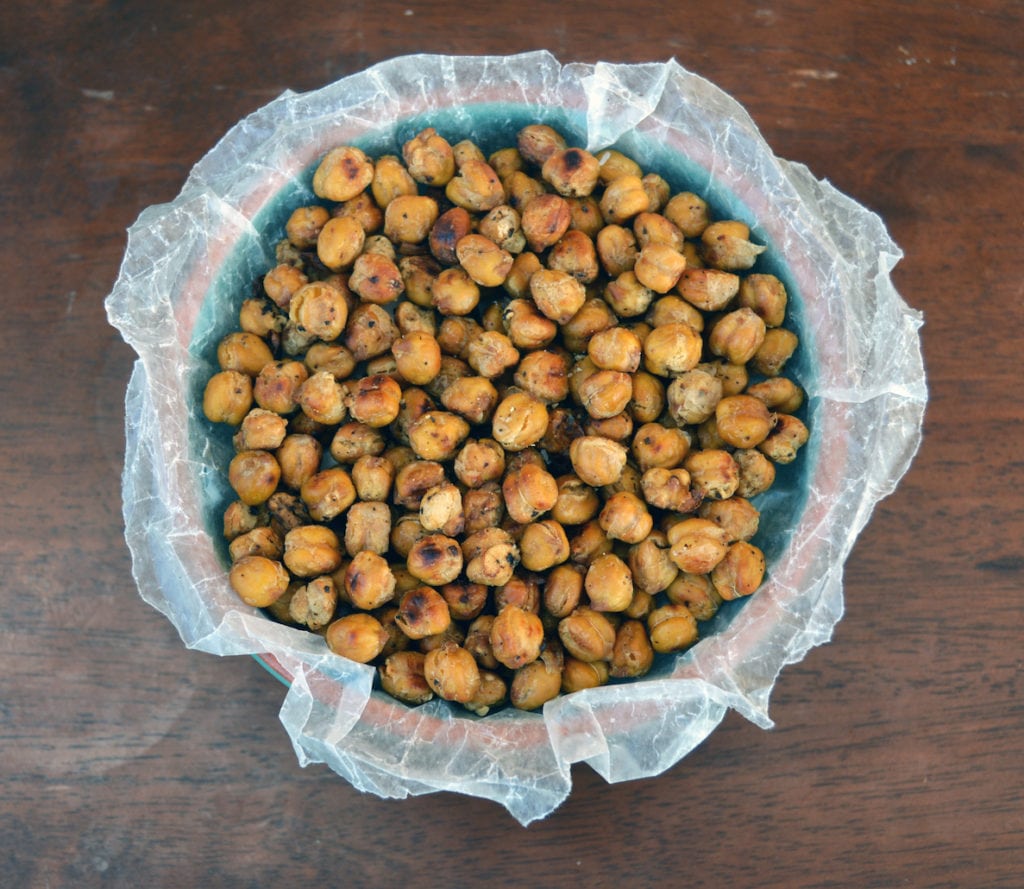
- Crunchy Roasted Chickpeas Two Ways
- Spiced Chickpea Veggie Burger
- Spiced Chickpea Wrap with Lemon Dill Yogurt Sauce
2. Spinach: 2 cups raw packed, 1.4 mg iron (7.7% DV)
Dark leafy greens, especially spinach, are one of the best sources of vegan iron. As an added bonus, they also contribute plant-based calcium to the diet for healthy bones.
Not to mention that leafy greens are also full of Vitamin C, folate and other nutrients. Get the scoop on leafy greens here and use spinach in unique ways with the recipes below.

- Spring Strawberry Salad
- Vegetable Barley Soup
- 20 Vegetarian & Vegan Recipes with Leafy Greens
- Sweet Potato & Kale Quesadilla
3. Oats: 1 cup, 1.7 mg iron (9.4% DV)
Oats are quick to cook, satisfying, and extremely versatile. One cup has almost 10% of your daily iron needs and can be a hearty breakfast or snack. Plus, a 1/2 cup of oats contains 5 grams of plant-based protein, and it’s a good source of fiber.
If you’re not sure what kind of oats to eat, pick the one you like best. All types of oats are nutritionally equal. The only difference is the way they are cut. Below are some oat-licious recipes to try.
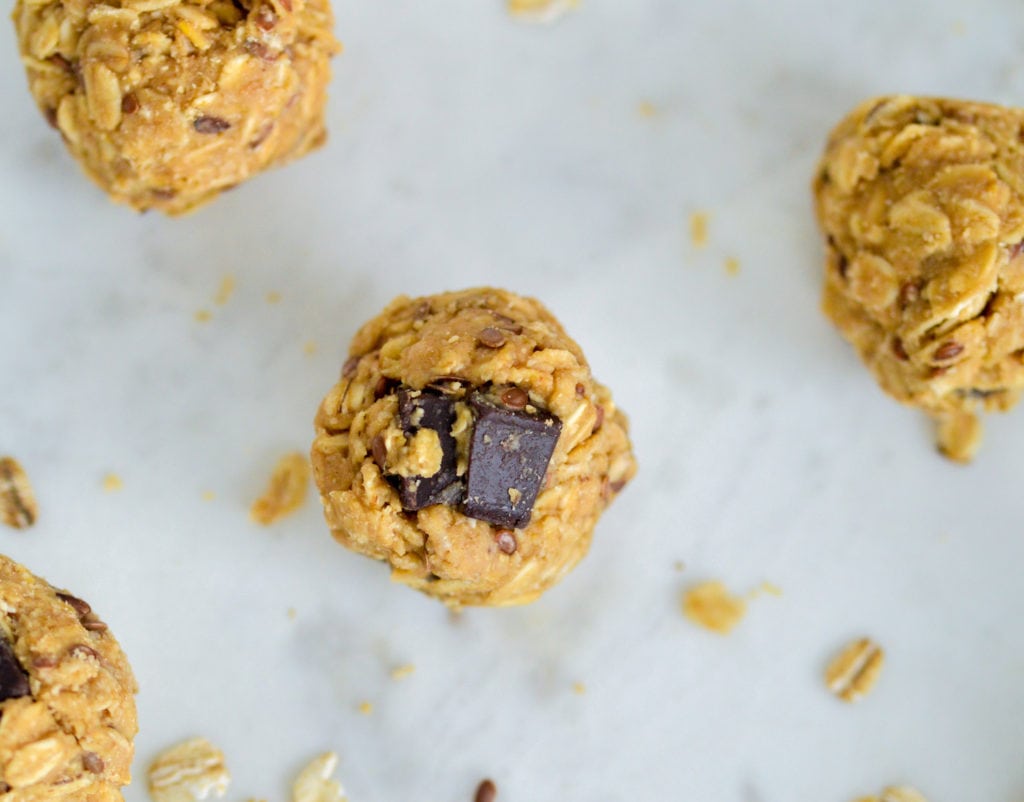
- Green Tea Overnight Oats
- Tahini Maple Oat Bites
- Creamy Coconut Milk Steel Cut Oatmeal with Clementines
4. Tofu: ½ cup, 3 mg iron (17% DV)
Vegetarians and vegans are no strangers to tofu, and that’s a good thing because this soy based protein is a good source of meatless iron. Plus, tofu is a nutritional powerhouse. It’s low in calories, yet rich in protein, plant-based calcium, fiber and other minerals.
Cooking tofu is easy–it takes on the flavor of any marinade, so you can use it in basically any dish. I personally like it in stir-fries or other dinners. Try any of these recipes below to get your tofu fix.

- Vegan Tofu Nuggets
- Easy BBQ Tofu Salad Bowl
- Butter Lettuce & Corn Salad with Tofu Croutons & Lime Vinaigrette
- 17 Tofu Recipes For Every Meal Of The Day
5. Lentils: 1/2 cup cooked, 3.17 mg iron (18% DV)
Lentils, along with other legumes, are a great source of iron especially for vegetarians or vegans! Just half a cup of cooked lentils provides almost 20% of the iron you need in a day, as well as plenty of fiber and protein.
For plant-based eaters who are worried about feeling hungry all the time, the nutrients in these tiny legumes help keep you full for hours. Whip up a batch of lentils at the start of the week and add them to salads, grain bowls and soups. Check out some of my favorite lentil recipes below.

- Greek Lentil Power Bowl
- Moroccan Lentil Soup
- Lentil Veggie “Meatballs”
- Zucchini & Lentil Tacos with Radish Salsa
6. Potatoes: 1 medium potato, 1.87 mg iron (14% DV)
News flash– potatoes aren’t bad for you! As a matter of fact, they are a healthy pre-workout carb, and they pack in serious iron and potassium. Keep the skin on for an added fiber boost!
Regular old white potatoes have more iron than sweet potatoes, but both are a good option on a plant-based diet. If you’re a fan of potato wedges, make them at home in your own oven! These Dill Roasted Potato Wedges are a favorite in my house.
7. Cashews: 1 ounce, 1.72 mg iron (13% DV)
Although cashews may not be the first nut on your list, they contain quite a bit of non-heme iron. Cashews are also rich and creamy, meaning that they are the base for many luscious vegan sauces. Whether you’re adding them to smoothies, salads, or eating alone, this crunchy nut helps you meet your daily dose of iron.
I like to add chopped cashews to roasted veggies for a contrasting texture. But you can also use them in a variety of ways, like in the plant-based recipes below.
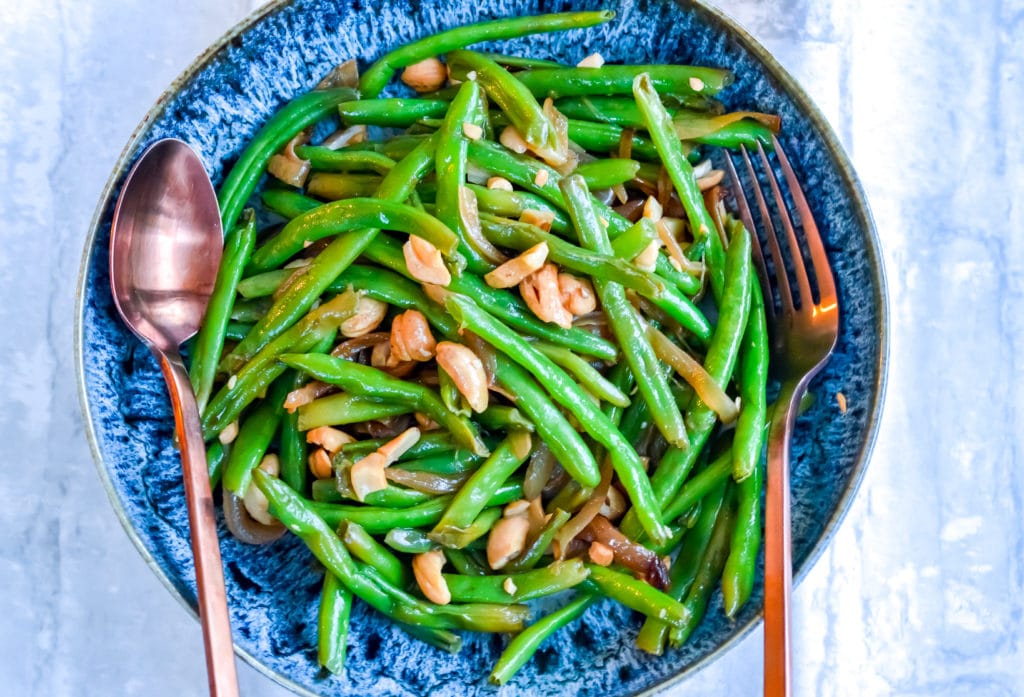
- Green Beans with Caramelized Onions and Cashews
- Cauliflower Alfredo Sauce
- No Bake Frozen Blueberry Bars
8. Edamame: 1 cup, 2 mg iron (11% DV)
Aside from being delicious, these green soybeans are packed with iron, protein and fiber. Edamame is well known for being a sushi appetizer, but you might not know that you can easily make edamame at home.
Buy a bag of frozen edamame and keep them on hand for when hunger strikes. Microwave this plant-based snack at anytime for a protein-rich snack or side dish.
Or save yourself the money and time and ditch the takeout. You can have a homemade sushi night with this Vegan Quinoa Sushi Bowl.

9. Sesame Seeds: 2 tablespoons, 1.2 mg iron (7% DV)
While sesame seeds aren’t always on people’s radar, they should be for their iron, protein and healthy fat content. Although nuts get all the love, seeds are a really easy way to add nutrients to any meal.
Not only do sesame seeds add a nice crunch to salads, ground sesame seeds make tahini–a staple in hummus or an allergy friendly alternative to nut butters. Try sesame seeds as a topping to a Vegan Sushi Bowl or use tahini in the recipes below.
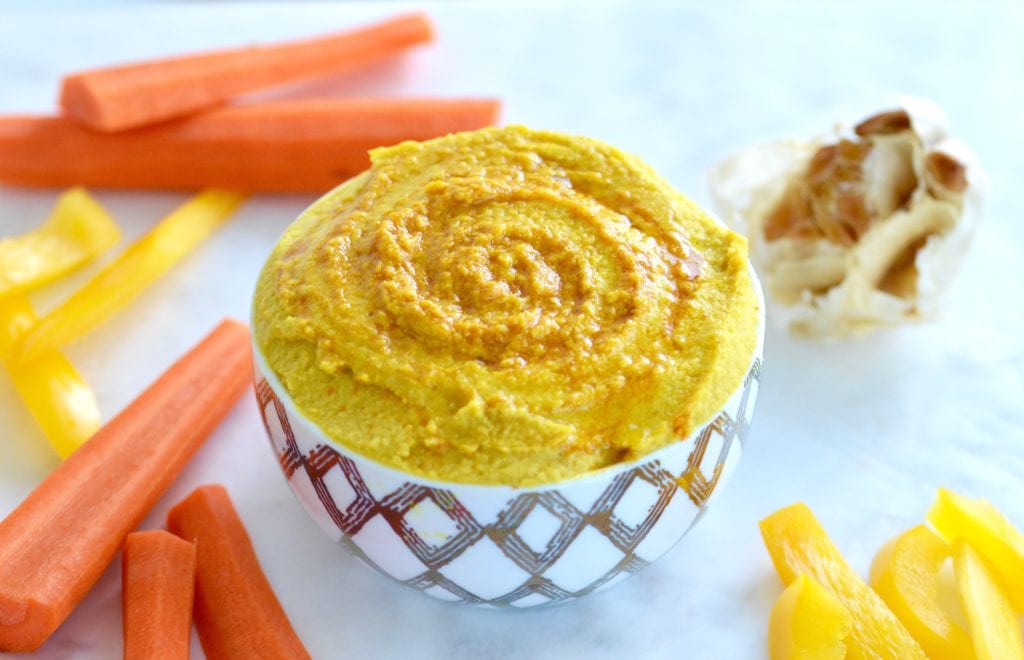
- Tahini Maple Oat Bites
- Green Power Crunch Salad with Lemon Tahini Dressing
- Roasted Garlic & Turmeric Hummus
10. Flax Seeds: 2 tablespoons, 1.2 mg iron (7% DV)
Another healthy seed to add to the list– flax seeds have gained some serious popularity over the last few years and for good reason! They contain healthy omega-3 fats, fiber and plant-based iron. Blend them in a smoothie or mix into your yogurt!
11. Beets: 1 cup, 1.34 mg iron (7% DV)
This royal purple root veggie is packed with antioxidants and provides a nice serving of iron. If you like a savory earthy taste, then beets are a must on your plant-based diet. Not to mention that beet juice also has some added benefits for athletes. The nitrates in beets help deliver oxygen to working muscles quickly, meaning that they can improve athletic performance.
Beets pair really nicely with citrus in this vibrant fall quinoa salad.
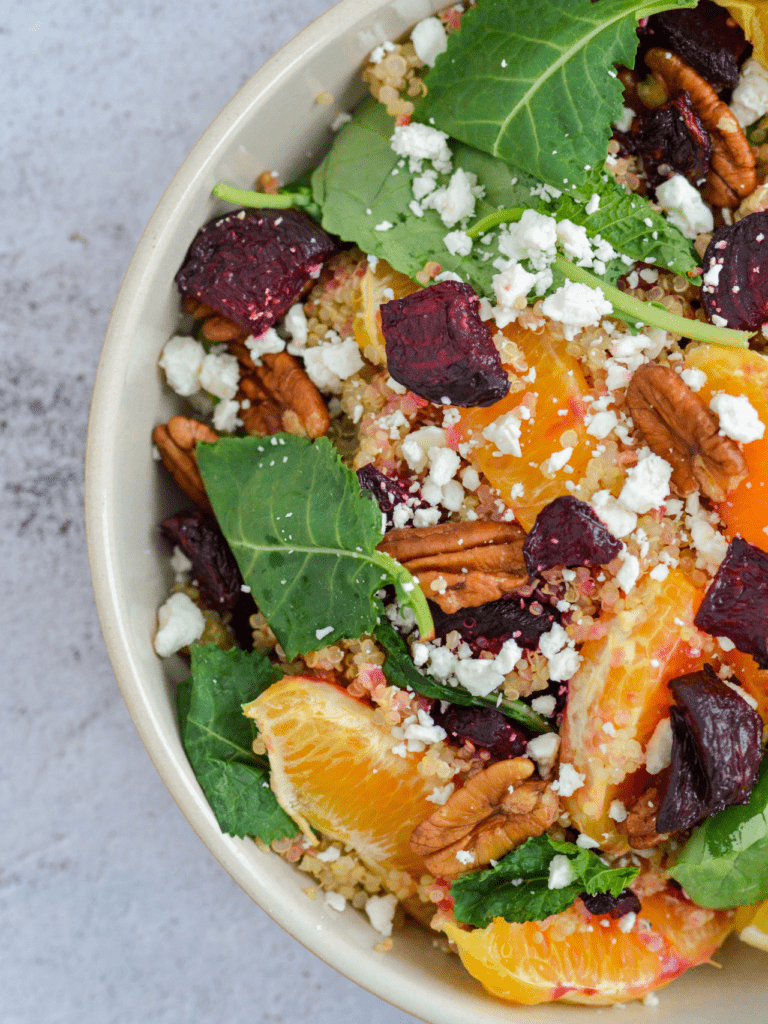
12. White Mushrooms: 1 cup cooked, 2.7 mg iron (15% DV)
With their meaty texture, mushrooms are often as a substitute for animal products in many recipes. Not only do mushrooms have a nice bite, they are also an excellent source of vegan iron. Mushrooms are also one of the only sources of Vitamin D in the produce aisle.
Throw mushrooms into a stir-fry, salad or make these Freezer Mushroom Breakfast Burritos.
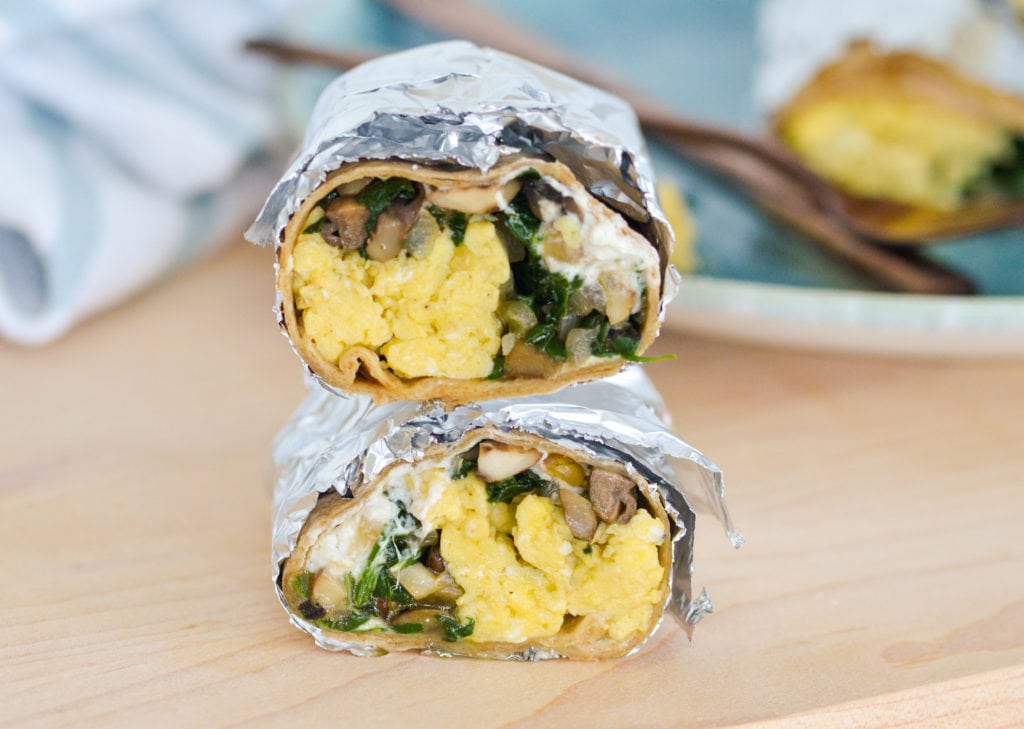


Very good list, i donated blood yesterday and this really helped
Awesome! Thanks for visiting my page.